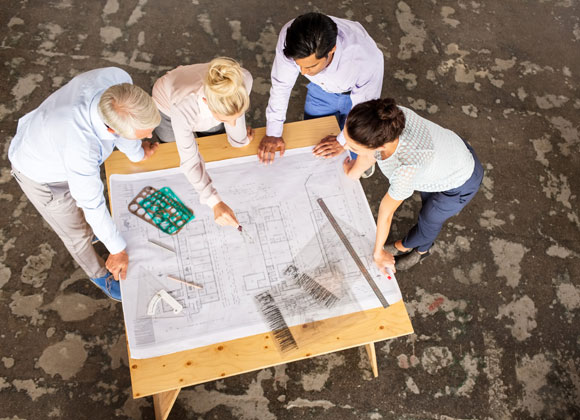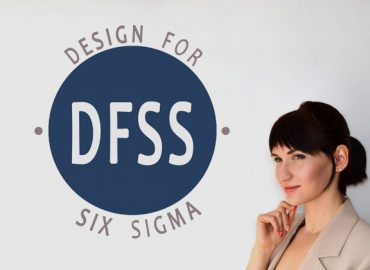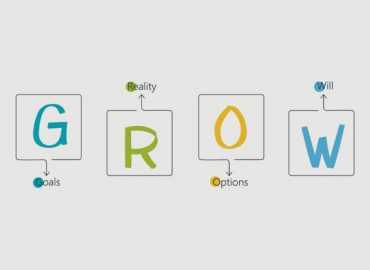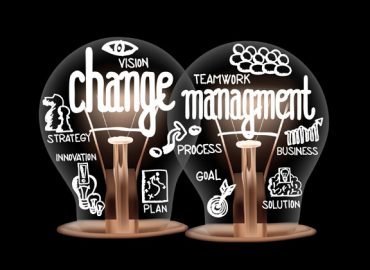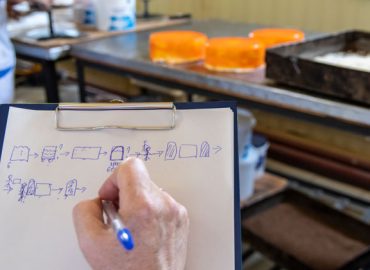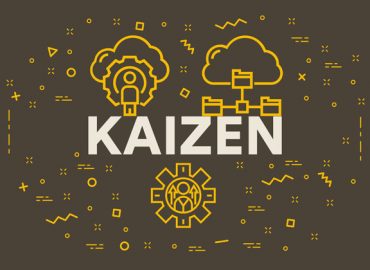Overview
Layout planning is one of the most important aspects of Lean manufacturing. In some cases, it would be one of the solutions introduced in the Improve phase of DMAIC methodologies in lean six sigma projects. Layout planning directly or indirectly promotes product and service quality, provides flexibility to adapt to changing conditions, facilitates a smooth flow of work, material, and information and incorporate safety and security measures.
Different types of layout
Depending on the nature of the process. Different types of layouts can be used in a manufacturing or service process. These are the most common types of layout:
- Process Layout
- Product Layout
- Fixed Position Layout
- Cellular Layouts
Process Layout
It is also called functional, job shop or batch shop layout. It is very common to be a non-repetitive and intermittent process that can handle varied processing requirements. The machines are grouped according to the process they perform such as all x-ray machines in the same area. It causes low raw material and finished goods inventory but high Work In Process (WIP) inventory. It is not particularly vulnerable to equipment failures and general-purpose equipment is used which is often less costly than the specialised equipment.
As the disadvantages of process layout, we can refer to high WIP inventory cost, low machine utilization, slow and inefficient material handling and more complexity for routing, scheduling and supervision.
Product layout
Contrary to process layout, in product layout, workstations are arranged to produce a specific product as uses standardised processing operations to achieve smooth, rapid, high volume and repetitive flow which is appropriate for the standardised product, high production volume, and stable production quantities. Low unit cost regarding the high rate of output, high utilisation of labour and equipment and established routing and scheduling might be considered as the advantages of the product layout. On the other hand, creating dull and repetitive jobs with less flexibility to changes in volume or product/process design, being highly susceptible to equipment failures and high investment in justified equipment, largely raw material and finished goods inventory are disadvantages of this type of layout.
Fixed Position Layout
Layout in which the product or project remains stationary (cannot be moved), and workers, materials, and equipment are moved as needed. In this layout, highly skilled labour is needed. Fixed costs are low but variable costs are typically variable.
Cellular Layout
Cellular Layout captures advantages of both process and product layout and it is more common in lean manufacturing. A layout in which similar parts are identified and grouped together to take advantage of their similarities in design and production is typically called group technology (GT). Similarities among parts permit them to be classified into part families. In each part family, processing steps are similar.
The improvement is typically achieved by organising the production facilities into manufacturing cells that specialise in the production of certain part families.
Cellular manufacturing can be implemented by manual or automated methods. When automated, the term “flexible manufacturing system” is often applied.
How CBIS can help you
Please contact us if you need our hands to assist you in conducting Layout planning training on consulting on your existing layout and how to improve that.
What is DFSS? Design for Six Sigma is used to perfect products and processes before...
What is DOE? In general usage, design of experiments (DOE) or experimental design is the...
What is coaching? Coaching is a cyclical process of elevating the other persons’ awareness of...
Lean Six Sigma is a powerful method for improving existing products, processes and services. One...
Introduction In our lean six sigma projects, too often we spend all our time on...
As global competition continues to grow, the pressure to improve becomes more and more intense....
What is SMED? SMED is the term used to represent setup time and is often...
Lean Six Sigma projects can lead to a rewarding experience and immense benefits for an...
Introduction Value Stream Map (VSM) is a diagram of every step involved in the material...
What is a Kaizen Blitz? Kaizen definition has been Americanised to mean “Continual Improvement.” A...
Attending our Public classroom physically or joining the team virtually from anywhere, according to the training calendar.
A flexible self-paced training for busy people along with our support by a dedicated coach, to solve the disadvantage of one-way online training
Delivering flexible and tailored training for your team and at your premises as a cost-effective solution for your team.

